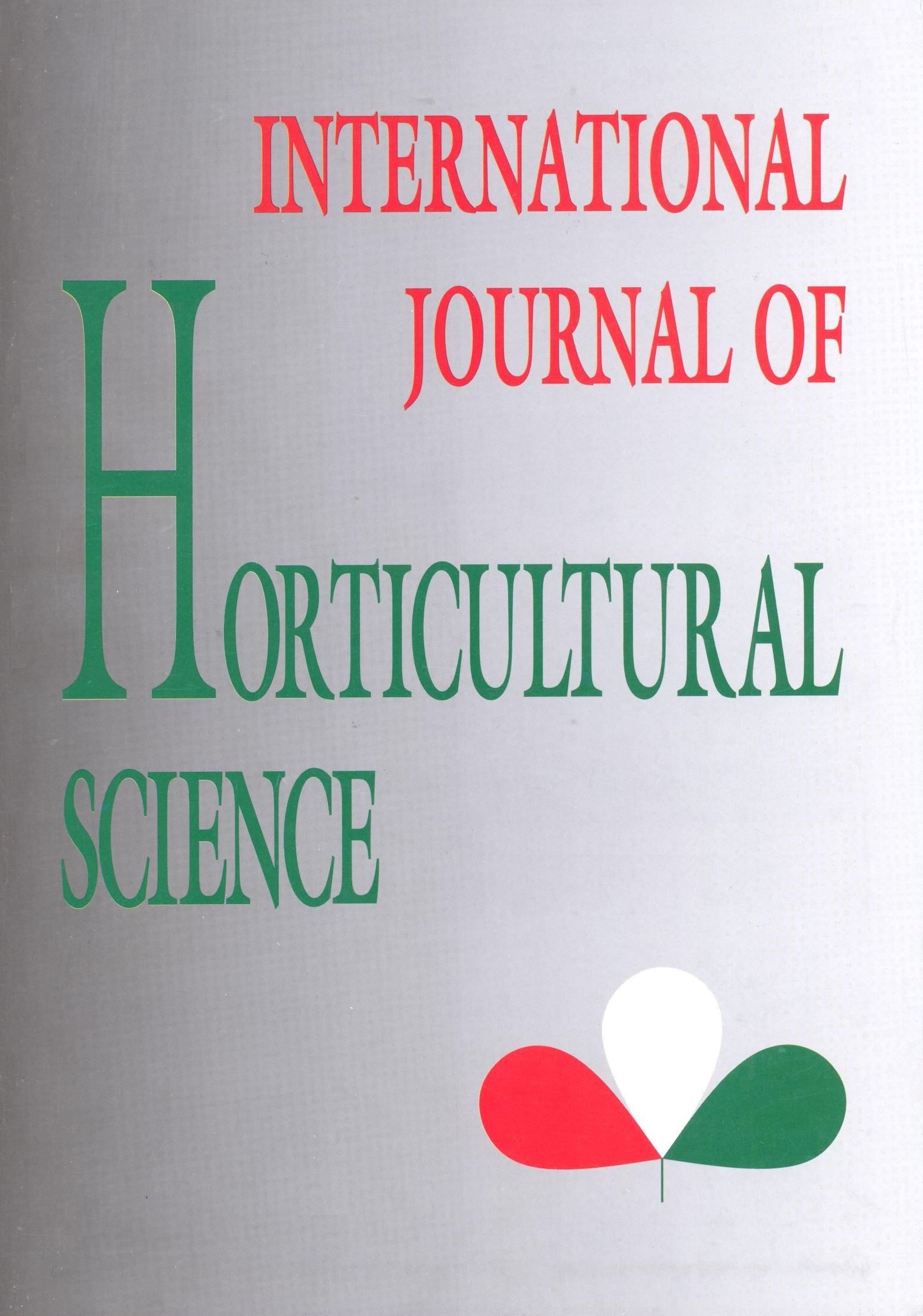Antioxidant capacity and total polyphenol content of Lavandula cultivars at different growing areas in Hungary
Authors
View
Keywords
License
Copyright (c) 2020 International Journal of Horticultural Science
This is an open access article distributed under the terms of the Creative Commons Attribution License (CC BY 4.0), which permits unrestricted use, distribution, and reproduction in any medium, provided the original author and source are credited.
How To Cite
Abstract
Lavandula species are worldwide grown essential oil producing medicinal plants with considerable economic value. Beside volatile oil, lavender also contains different phenolic compounds which have been less widely studied till now. Cultivation of lavender has become widespread in Hungary in the recent years, however, growers have limited knowledge on the productivity of cultivars available. In our research we were aimed to studying the antioxidant capacity and total polyphenol content of samples collected in two growing areas (Dörgicse and Szomód) from flowers of two L. angustifolia (‘Hidcote’, ‘Munstead’) and two L. × intermedia (‘Grosso’, Grappenhall’) varieties, during the full blooming period of 2017. Antioxidant capacity of the samples was determined by FRAP assay (Benzie and Strain, 1996), while total polyphenol content (TPC) was measured by a modified method of Singleton and Rossi (1965). According to our results, varieties of L. × intermedia showed higher values of antioxidant capacity and of total polyphenol content, than those of L. angustifolia cultivars. Among them, both the antioxidant capacity (179.6 mg AAE/g DW) and total polyphenol content values (152.4 mg GAE/g DW) of ’Grosso’ from Dörgicse were the highest. Concerning FRAP values of all the cultivars investigated, larger variability were found in Dörgicse, than in Szomód. Regarding the effect of growing area, each cultivar represented similar FRAP values in Dörgicse and in Szomód, except for ’Grosso’. However, in the case of TPC values, higher variability was observed between the growing areas, especially in the case of ’Grosso’. In the future our studies on lavender polyphenols will be completed with qualitative evaluation of the values obtained by HPLC analysis.
References
- Andrys, D., Kulpa, D., Grzeszczuk, M., Bihun, M., Dobrowolska, A. (2017): Antioxidant and antimicrobial activities of Lavandula angustifolia Mill. field-grown and propagated in vitro. Folia Hort. 159-178. doi: 10.1515/fhort-2017-0016
- Benzie, I. F. F., Strain, J. J. (1996): The Ferric Reducing Ability of Plasma (FRAP) as a Measure of ‘‘Antioxidant Power’’: The FRAP Assay, Analytical Biochemisrty. 239: 70–76
- Bernáth, J. (2013): Vadon termő és termesztett gyógynövények, Mezőgazda kiadó, Budapest, ISBN 978-963-286-674-1, 320-324
- Blažeković, B., Vladimir-Knežević, S., Brantner A., Štefan, B. M. (2010): Evaluation of Antioxidant Potential of Lavandula × intermedia Emeric ex Loisel. 'Budrovka': A Comparative Study with L. angustifolia Mill. Molecules. 15: 5971-5987. doi:10.3390/molecules15095971
- Ceylan, Y., Ustab, K., Ustab, A., Maltasc, E., Yildiz, S. (2015): Evaluation of Antioxidant Activity, Phytochemicals and ESR Analysis of Lavandula Stoechas. Acta Phys Pol A. (128)2-B. doi: 10.12693/APhysPolA.128.B-483
- Darbre, P. D., Aljarrah, A., Miller, W. R., Coldham, N. G., Sauer, M. J., Pope, M. G. (2004): Concentrations of parabens in human breast tumours. J. Appl. Toxicol. 24: 5-13. doi: 10.1002/jat.958
- Duda, S. C., Marghitas L. A., Dezmireana, D., Duda M., Margaoan, R., Bobis O. (2015): Changes in major bioactive compounds with antioxidant activity of Agastache foeniculum, Lavandula angustifolia, Melissa officinalis and Nepeta cataria: Effect of harvest time and plant species. Ind. Crops and Prod. 77: 499–507. https://doi.org/10.1016/j.indcrop.2015.09.045
- Grant, W., Zerihun, D., Mark, R., Soheil, M. (2011): Biosynthesis and Therapeutic Properties of Lavandula Essential Oil Constituents. Planta Med. 77(1): 7-15. DOI: 10.1055/s-0030-1250136
- Lis-Balchin, M. (2002): Lavender, The genus Lavandula. Taylor and Francis. ISBN 0-415-28486-4. pp. 11-13. 86-90. 117-170. 206-214
- Németh-Zámbori, É., Pluhár, Zs., Szabó, K., Malekzadeh, M., Radácsi, P., Inotai, K., Komáromi, B., Seidler-Lozykowska, K. (2016): Effect of water supply on growth and polyphenols of lemon balm (Melissa Officinalis L.) and thyme (Thymus Vulgaris L.), Acta Biologica Hungarica 67(1):64-74. DOI: 10.1556/018.67.2016.1.5
- Nurzyńska-Wierdak R., Zawiślak G. (2016): Chemical composition and antioxidant activity of lavender (Lavandula angustifolia Mill.) aboveground. Acta Sci. Pol. Hortorum Cultus, 15(5): 225-241. ISSN 1644-0692
- Radácsi, P., Szabó, K., Szabó, D., Trócsányi, E., Németh-Zámbori, É. (2016): Effect of water deficit on yield and quality of lemon balm (Melissa officinalis L.), Zemdirbyste-Agriculture, 103(4): 385‒390. DOI 10.13080/z-a.2016.103.049
- Sánchez-Vioque, R., Polissiou, M., Astraka, K., Mozos-Pascual, M. de los, Tarantilis, P., Herraiz-Pe˜nalver, D., Santana-Méridas, O. (2013): Polyphenol composition and antioxidant and metal chelating activities of the solid residues from the essential oil industry, Ind. Crops and Prod., 49: 150– 159. DOI: 10.1016/j.indcrop.2013.04.053
- Shafaghat, A., Salimi, F., Amani-Hooshyar, V. (2012): Phytochemical and antimicrobial activities of Lavandula officinalis leaves and steams against some pathogenic microorganisms. J. Med. Plants Res. 6: 455–460. DOI: 10.5897/JMPR11.1166
- Singleton, V. L., Rossi, J. A. Jr. (1965): Colorunetry of total phenolics with phosphomolybdic-phosphotungstic acid reagents. Amer. J. Enol. Viticult. 16: 144-58
- Torras-Claveria, L., Jauregui, O., Bastida, J., Codina, C., F. Viladomat, (2007): Antioxidant Activity and Phenolic Composition of Lavandin (Lavandula x intermedia Emeric ex Loiseleur) Waste, J. Agric. Food Chem., 55: 8436–8443. DOI: 10.1021/jf070236n
- Trócsányi, E., György, Zs., Inotai, K., Szabó, K., Pluhár, Zs., Radácsi, P., Malekzadeh, M., Németh-Zámboriné, É. (2015): Enhanced rosmarinic acid accumulation and rosmarinic acid synthase gene expression under drought stress in thyme (Thymus vulgaris), Planta Med., 81:246, DOI: 10.1055/s-0035-1565623
- Zielinska, S., Matkowski, A. (2014): Phytochemistry and bioactivity of aromatic and medicinal plants from the genus Agastache (Lamiaceae). Phytochem. Rev. 13: 391–416

 https://doi.org/10.31421/IJHS/26/2020/5748
https://doi.org/10.31421/IJHS/26/2020/5748










